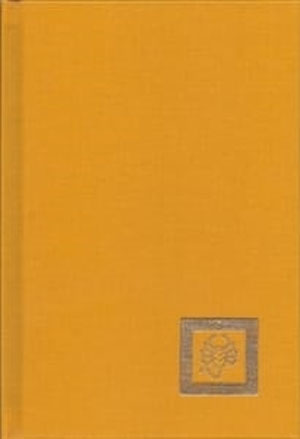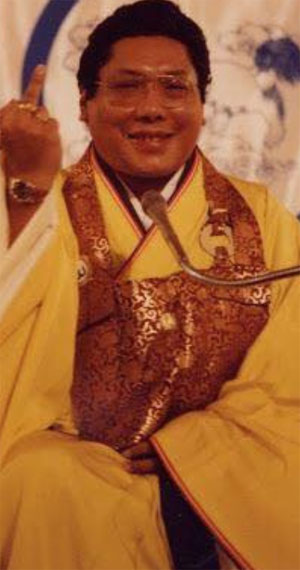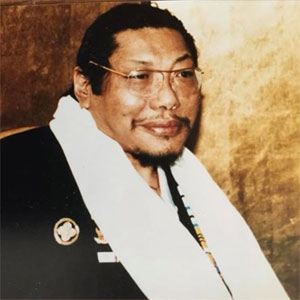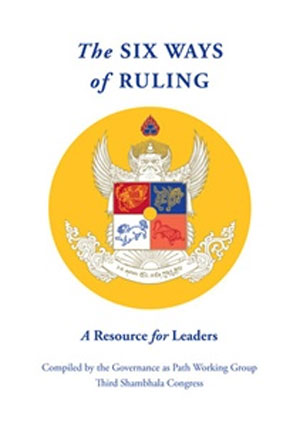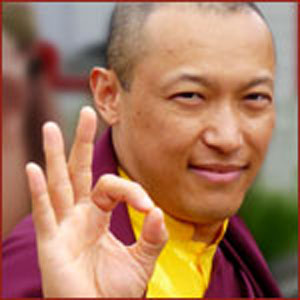Kings of Shambhalaby Wikipedia
Accessed: 6/30/19
NOTICE: THIS WORK MAY BE PROTECTED BY COPYRIGHTYOU ARE REQUIRED TO READ
THE COPYRIGHT NOTICE AT THIS LINK BEFORE YOU READ THE FOLLOWING WORK, THAT IS AVAILABLE SOLELY FOR PRIVATE STUDY, SCHOLARSHIP OR RESEARCH PURSUANT TO 17 U.S.C. SECTION 107 AND 108. IN THE EVENT THAT THE LIBRARY DETERMINES THAT UNLAWFUL COPYING OF THIS WORK HAS OCCURRED, THE LIBRARY HAS THE RIGHT TO BLOCK THE I.P. ADDRESS AT WHICH THE UNLAWFUL COPYING APPEARED TO HAVE OCCURRED. THANK YOU FOR RESPECTING THE RIGHTS OF COPYRIGHT OWNERS.
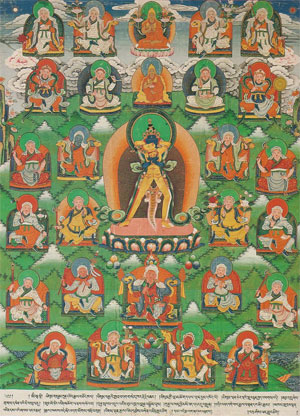
Central figure is a yidam, a meditation deity. The 25 seated figures represent the 25 kings of Shambhala. The middle figure in the top row represents Tsongkhapa
In part of the Indo-Tibetan Vajrayana Buddhist tradition,
thirty-two Kings of Shambhala reside in a mythical kingdom.
LegendThe first notable king, King Suchandra (sometimes wrongly Sanskritized as "Chandrabhadra," Tib. Dawa Sangpo), is reported to have requested teaching from the Buddha. In response to this request, it is said the Buddha gave him the first Kalachakra root tantra. By practicing the Kalachakra, the whole of Shambhala eventually became an enlightened society.King Suchandra was followed by an additional six Dharmarajas (Truth Kings), with his eighth successor, Manjushri Yashas (sometimes wrongly Sanskritized as "Manjushrikirti"), the first of the 25 Kalki Kings (Tib. Rigden, wylie: rigs ldan).
The Seven DharmarājasThe Seven Dharmarājas (Tib. Chögyal, Wylie chos rgyal) are:
1. Sucandra (Tib. Dawa Sangpo, Wylie zla ba bzang po) c. 900 to 876 BC. Note: the Kalachakra calculations put the life of Śākyamuni Buddha quite a bit earlier than what is generally accepted, and the Tibetans produced a number of divergent calculations of the dates listed here. Many of the named kings are often wrongly Sanskritized (i.e., back-translated from the Tibetan) in Western publications.
2. Devendra (Tib. Lhayi Wang) (876-776 BC) - Fond of Sentient Beings
3. Tejasvin (Tib. Ziji Chän) (776-676 BC) Bearer of the Dharma Wheel and the Auspicious Conch
4. Somadatta (Tib. Dawä Jin) (676-576) Lord of Speakers
5. Deveśvara/Sureśvara (Tib. Lhaji Wangchug) (576-476) Destroyer of the City of Delusion
6. Viśvamūrti (Tib. Natshog Zug) (476-376) Conqueror of False Leaders, Holding a Lotus
7. Sureśana (Tib. Lhayi Wangdän) (376-276) Cutter of Delusion, Uprooter of Karma and Klesha
The Twenty-Five KalkiThe most recent 25 of the 32 Kings of Shambhala are known as Kalki kings (Tib. Rigden, wylie: rigs ldan), meaning "Holder of the Castes." The Kalki King is said to reside upon a "Lion Throne" in Kalapa, the capital city of the Kingdom.
The Kalki are holders of the Kalachakra (Wheel of Time), which are the teachings of Buddha Shakyamuni passed down from the original seven Dharmarajas of Shambhala.
 Rigden Trakpa or Manjushrí Yashas, King of Shambhala
Rigden Trakpa or Manjushrí Yashas, King of Shambhala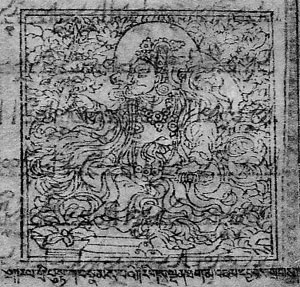 Jamyang Drag (´jam dbyangs grags)
Jamyang Drag (´jam dbyangs grags)As explained by Buddhist scholar John R. Newman, the Kalki are often erroneously termed "Kulika" by Tibetan Buddhist scholars unfamiliar with the original Sanskrit texts:
".. . so far no one seems to have examined the Sanskrit Kalachakra texts. The Buddhist myth of the Kalkis of Shambhala derives from the Hindu Kalki of Shambhala myths contained in the Mahabharata and the Puranas. The Vimalaprabha even refers to the Kalki Purana, probably the latest of the upapuranas. This relationship has been obscured by western scholars who have reconstructed the Tibetan translation term rigs ldan as "Kulika." Although Tibetan rigs ldan is used to translate the Sanskrit kulika in other contexts, here it always represents Sanskrit kalkin (possessive of kalkah; I have used the nominative kalki)."[1]
Kalki1. Yashas (Tib. Jampal Dakpa; "Manjushri Yashas") King Yashas is said to have lived in the second century BCE. He formatted the Kalachakra teachings into a condensed and simplified structure termed the "Sri Kalachakra" or "Laghutantra." He also converted a group of non-Buddhist Brahman priests of Shambhala to Buddhism and gave them the Kalachakra initiation, thereby uniting all inhabitants into one "vajra caste," or family of tantric practitioners. Yashas is said to have predicted the coming of "Barbarian Dharma" after 800 years (about 600 CE), which indicates a form of Islam.
2. Pundarika (Tib. Pema Karpo) (176-76 BCE) White Lotus, cherished by the Lord of Potala. King Pundarika wrote a commentary called "Vimalaprabha" (Skt.) or "Stainless Light." This text, together with the Sri Kalachakra, is the source text of the Kalachakra system as it is now practiced. Other practice texts are commentaries on these two. The Dalai Lamas are said to be incarnations of Pundarika.
3. Bhadra (Tib. Zangpo) (76 BC -227 CE) One who Rules by the Thousand-spoked Wheel.
4. Vijaya (Tib. Nampar Gyäl) (227-327) Attractor of Wealth, Victorious in War.
5. Sumitra (Tib. Shenyen Zangpo) (327-427) Integrator of Method and Wisdom, Victorious over Samsara.
6. Raktapani (Tib. Rinchen Chag) (427-527) Holder of the Blissful Vajra and Bell.
7. Vishnugupta (Tib. Kyabjug Bäpa) (527-627) Smiling Holder of the Trident and Rosary.
8. Suryakirti (Tib. Nyima Drag) (627-727)
Annihilator of Wild Demons.9. Subhadra (Tib. Shintu Zangpo) (727-827)
Holder of the Sword and Shield.10. Samudra Vijaya (Tib. Gyatso Namgyäl) (827-927)
Annihilator of all types of Devils.11. Aja (Tib. Gyälka) (927-1027)
Who binds with Unbreakable Iron Chains.12. Surya/Suryapada, (Tib. (Wonang) Nyima) (1027-1127) All-Pervading, Radiant Jewel Light.
13. Vishvarupa (Tib. Natshog Zug(chän)) (1127-1227)
Holder of the Vajra Prod and Noose.14. Shashiprabha (Also Sasiprabha or Chandraprabha, Tib. Dawäi Ö) (1227-1327) Lord of Secret Mantras, Holder of the Wheel and Conch.
15. Ananta, Thayä (Tib. Nyen) (1327-1427) Holder of the Mallet that Crushes False Ideas.
16. Shripaala or Parthiva (Tib. Sakyong) (1427-1527)
Holder of the Cleaver that Cuts the Bonds of Ignorance.17. Shripala (Tib. Pälkyong) (1527-1627)
Annihilator of the Host of Demons.18. Singha (Tib. Senge) (1627 -1727) Who Stuns the Elephant with his Vajra.
19. Vikranta (Tib. Nampar Nön) (1727 - 1827)
Subduer of the Mass of Foes, the Inner and Outer Classes of Devils.20. Mahabala (Tib. Tobpo Che) (1827 - 1927) Tamer of all False Leaders by Means of the Sound of Mantra.
21. Aniruddha (Tib. Magakpa) (1927-2027)
Who Draws and Binds the Entire Three Worlds. Aniruddha, the present Kalki king, was prophesied to rule during a time when Vajrayana Buddhism and the Kalachakra are nearly extinguished.
22. Narasingha (Tib. Miyi Senge) (2027-2127)
Ruling by the Wheel, Holding the Conch.23. Maheshvara (Tib. Wangchug Che) (2127-2227)
Victorious over the Armies of Demons.24. Anantavijaya (Tib. Thaye Namgyäl) (2227-2327) Holder of the vajra and Bell.
25. Raudra Chakrin (Tib. Dakpo Khorlocen) (2327 to ? )
Forceful Wheel Holder. The final king prophesied in the Kalachakra, Raudra Chakrin is further prophesied to appear to all humanity in 2424, and to establish a planet-wide Golden Age subsequent to his defeat of degenerate world rulers.
Dalai LamaThe Dalai Lamas are said to be incarnations of the second Kalki, Pundarika. In particular, the Second, Seventh and Fourteenth (present) Dalai Lamas are said to have strong affinity to the Kalki kings, with the present Dalai Lama having to date offered the Kalachakra initiation thirty times.
The Lineage of Sakyong KingsFollowers of the contemporary Tibetan Buddhist teachers Chogyam Trungpa Rinpoche and his son Sakyong Mipham Rinpoche believe them to be intimately connected to the Kalki kings, and thus dedicated to propagating the wisdom of Shambhala to the world. The term "Sakyong" in Tibetan literally means "earth-protector," although it is colloquially understood to mean "King."
The Sakyong King lineage is traditionally familial.
[citation needed]See also• Dalai Lamas
• Kalachakra
• Kalki
• Kalki Purana
• Panchen Lamas
• Sakyong Mipham Rinpoche
• Shambhala
• Suchandra
Notes1. Newman, John L. "A Brief History of the Kalachakra," Wheel of Time: The Kalachakra in Context. Snow Lion: 1985. ISBN 1559390018, pg 84
External links• International Kalachakra Network
